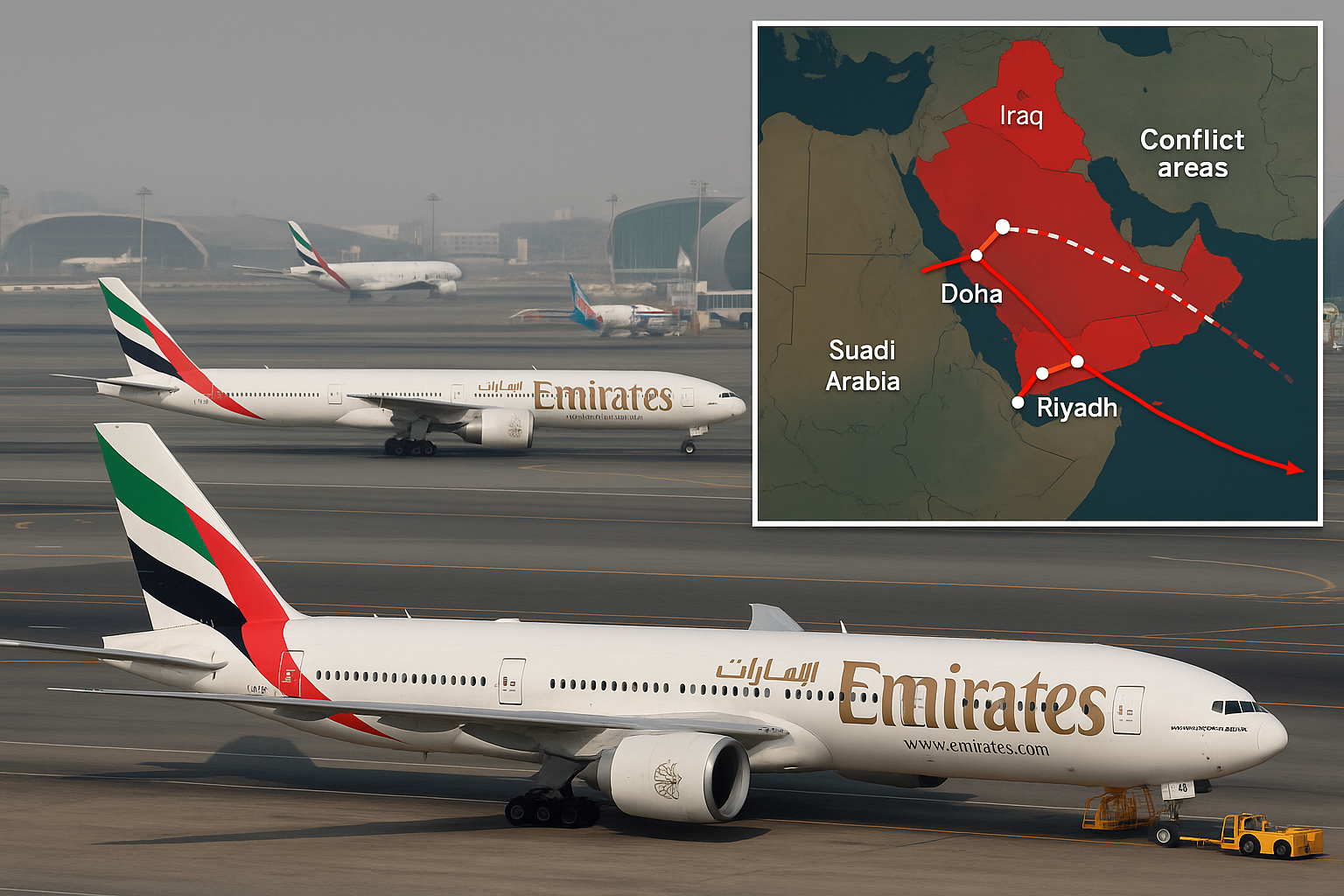Middle East’s Premier Aviation Hubs Face Rising Turbulence Amid Conflict-Driven Disruptions
Dubai, UAE – June 27, 2025 – Once celebrated as global aviation giants, the Middle East’s flagship air hubs—Dubai, Doha, Riyadh, and Abu Dhabi—are now grappling with increasing uncertainty as regional conflicts threaten to destabilize air connectivity, disrupt flight schedules, and weaken traveler confidence.
These pivotal airports have long played an essential role in connecting passengers between Asia, Europe, Africa, and the Americas. However, ongoing geopolitical instability across the Middle East, particularly involving flare-ups between Israel, Iran, and surrounding nations, has forced airlines to adjust operations and sparked concerns over safety and reliability.
Global Airlines Reroute to Bypass Risk Zones
International carriers, including Emirates, Qatar Airways, and Etihad Airways, have been forced to reroute flights to avoid active conflict zones and volatile airspace, resulting in lengthier flight durations and soaring fuel costs. Airlines such as Lufthansa, Air France, and British Airways are also redirecting select services away from affected air corridors, particularly those passing over the Gulf region.
The result is a strained logistics network and added complexities for both passengers and crew, as alternative routes congest existing safe airways.
“Passenger safety is paramount,” stated a spokesperson for the International Air Transport Association (IATA). “Airlines must comply with regulatory advisories while balancing operational continuity.”
Tourism and Travel Confidence at Risk
Dubai International Airport (DXB), Hamad International in Doha, King Khalid International in Riyadh, and Abu Dhabi International have all reported a drop in transit traffic since the latest regional tensions escalated in Q2 2025. While not all airports are directly affected by conflict, perceived risk is already deterring international tourists and business travelers.
According to data from ForwardKeys, flight bookings through Gulf-based hubs fell by 11% year-on-year in May 2025. Regional hospitality and tourism sectors are beginning to feel the pinch as visitors opt for alternate European or Southeast Asian stopovers.
“This isn’t just about rerouting—it’s about trust. Travelers want stability,” said aviation analyst Hadi Al-Zayer.
Economic Ripple Effects for the Aviation Sector
The financial strain extends beyond ticket sales. Airlines operating out of the Middle East face surging insurance premiums, rising fuel expenditures due to longer routes, and delays in cargo deliveries. These challenges are compounded by reduced passenger volumes and a cautious tourism outlook.
Aviation, hospitality, retail, and transport industries that rely heavily on airport traffic are also seeing slower recovery trajectories compared to global averages. Post-pandemic momentum is now at risk of being reversed in key markets like the UAE and Saudi Arabia.
Strategic Contingency Planning in Motion
In response, aviation authorities in the region have activated emergency protocols and strategic operational plans to navigate the instability. Dubai Airports has implemented flexible scheduling and increased coordination with foreign embassies and airlines, while Qatar Civil Aviation Authority is enhancing flight surveillance and airspace management tools.
Saudi Arabia’s General Authority of Civil Aviation (GACA) is also coordinating with military and international aviation bodies to ensure safe corridors for inbound and outbound routes.
Technology Paving the Way for Resilience
Middle Eastern airports are leveraging cutting-edge technologies such as AI-based flight path analysis, advanced radar tracking, and real-time passenger communication systems to bolster traveler confidence and mitigate risks. Digital updates and multilingual alerts have become essential tools in managing disruptions and reducing misinformation.
At Hamad International Airport, biometric screening and AI-powered security scanning help fast-track passengers and maintain high safety standards despite rising concerns.
Diversification and Market Expansion: A Strategic Imperative
To reduce dependence on passenger transit alone, air hubs are expanding cargo operations, enhancing freight terminals, and exploring new markets in Central Asia, Sub-Saharan Africa, and Southeast Asia. The UAE’s Dubai South logistics corridor and Saudi Arabia’s Vision 2030 air cargo strategy are key initiatives aimed at maintaining economic momentum even during air travel slowdowns.
Qatar Airways Cargo has recently launched new routes to Kigali, Nairobi, and Delhi, highlighting a shift in focus toward emerging markets.
Looking Ahead: Recovery Through Adaptation
Although the Middle East’s aviation landscape faces mounting challenges, regional leaders remain optimistic about long-term resilience. Stability will depend on a combination of diplomatic engagement, technological innovation, passenger reassurance, and market diversification.
“Resilience is not built in quiet times,” remarked Etihad’s Group COO, “It’s forged through crisis, and we are adapting in real time.”
Conclusion: A Test of Global Connectivity
Middle Eastern air hubs are at a critical juncture. As tensions escalate, the aviation industry must evolve, applying lessons learned from both geopolitical disruptions and the pandemic. With proactive strategies, international cooperation, and a focus on passenger trust, regional airports can weather the turbulence and reclaim their status as essential pillars of global connectivity.
For more travel news like this, keep reading Global Travel Wire















